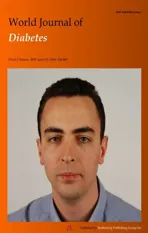Management and control of type 2 diabetes mellitus in Lebanon:Results from the lnternational Diabetes Management Practices Study Wave 6
2019-04-24HalaAhmadiehMarieThereseSawayaSamiAzar
Hala Ahmadieh,Marie-Therese Sawaya,Sami T Azar
Abstract
Key words: Diabetes complications;Dyslipidemia;Hypertension;Blood pressure control;Glycemic control
INTRODUCTION
Diabetes mellitus is a major public health issue worldwide that is associated with significant complications.The International Diabetes Federation (IDF) estimated that there would be an increase in the number of patients with diabetes worldwide,from 592 million persons in 2015 to 642 million in 2040[1].This rise is expected to be greatest in developing countries[2].In Lebanon,the prevalence of diabetes was found to be 7.8% for the population aged 20-79 years[3].A strong positive correlation was found between type 2 diabetes and both higher body mass index (BMI) and sedentary lifestyle[4].There is a lack of data on the quality of care of patients with diabetes,specifically among non-Western countries.
In Lebanon,a study demonstrated that glycosylated hemoglobin (HbA1c) was only reported in 40% out of the 204 diabetic patients assessed,with controlled diabetes(HbA1c < 7%) in 28.4%,and an HbA1c ≥ 8.5% in 38.3%[5].In addition,a high prevalence of micro-vascular diabetic complications was found among Lebanese with diabetes,with at least one third having neuropathy or retinopathy,and almost 50%having albuminuria.As for macro-vascular complications,20% were found to have coronary artery disease and peripheral vascular disease (PVD),and 4.1% had cerebrovascular disease[6].Therefore,there is a need to better assess the current practices in diabetes management,and put some action into place in order to improve the quality of care for these patients.This is especially important for patients from both the United Kingdom Prospective Diabetes Study[7]carried out on type 2 diabetes mellitus patients,as well as the Diabetes Control and Complications Trial[8]carried out on type I diabetes patients,which showed that tight glucose control can prevent the onset and progression of microvascular complications to a significant extent.In the long-term,it can even prevent cardiovascular events,as was shown in their follow-up studies[9,10].
In recognition of this,the International Diabetes Management Practices Study(IDMPS) was set to collect data in a standardized manner in order to primarily assess the therapeutic management and control of type 2 diabetes mellitus in the current medical practice in the Lebanese population,and reflect on the characteristics of Lebanese patients with type 2 diabetes.Previously,data were reported in Lebanon between the years 2006 and 2012[11,12].In this paper,data from Wave 2013-2014 of the IDMPS were retrieved and analyzed.Secondary endpoints included the proportion of subjects with target HbA1c in compliance with the international recommendations’guidelines[13,14],the frequency of hypoglycemia episodes,and the assessment of the health economic impact of type 2 diabetes and its complications.
MATERIALS AND METHODS
The IDMPS is an international,observational study conducted in multiple selected centers in different non-Western countries.This study included patients with type 1 and type 2 diabetes mellitus,who were selected in a random fashion from a representative pool of diabetic patients.The IDMPS consisted of six waves,beginning in the year 2006 and ending in 2014,with each wave being conducted yearly and consisting of a cross-sectional and longitudinal phase.
心律失常性心肌病是指因心动过速、心动过缓、节律不规整及心脏收缩不同步等心律失常引起的左室结构或功能受损,经控制心室率或转复心律后,心脏功能大多可以逆转的一组心肌病。心律失常性心肌病又分为快速性和缓慢性两种,前者由房颤、房扑、阵发性室上速、室速等快速性心律失常引起。由于该类心肌病与扩张型心肌病的临床表现极为相似,因此临床上极易混淆。现就该病的发病机制进行阐述,以提高临床医师对该类疾病的认识。
The cross-sectional phase was conducted through yearly surveys of 2 wk duration.The survey tried to assess the demographic characteristics of type 1 and type 2 patients with diabetes mellitus,along with their therapeutic management in the current medical practice.The longitudinal phase was conducted in the first two out of five waves,and consisted of a 9-mo follow-up period focused on different parameters.The sixth Wave of the study did not include a longitudinal phase.
The number of participating physicians and their profile was decided upon on a country basis,where the number of physicians chosen depended on the patient sample size,which was individualized in each country.Since each physician was asked to enroll 10 patients with diabetes mellitus,the number of physicians was determined by dividing the number of patients by 10.Physicians were selected randomly and were asked to recruit,during a 2-wk period,the first 10 patients with type 2 diabetes presenting to their clinics who were older than 18 years of age,as well as the first 5 patients with type 1 diabetes.In Lebanon,80 sites were selected and the plan was to recruit 1,000 patients.A total of 77 physicians and 1,159 patients were included in 2011,and 60 physicians and 600 adult male or female patients were included into the sixth Wave in the year 2013.A signed written informed consent was obtained from all participating patients before the application of any study-related procedures.These consent forms were available in English as well as in Arabic for those participants who did not understand the English language.Ethics committee approval was obtained from participating centers where such committees are in place.
Exclusion criteria included concomitant enrollment in any other study,gestational diabetes,and cancer of the pancreas.Finally,596 were included in the analysis population.Among these patients,one was a type 1 diabetic patient and the rest were type 2.
Data were collected on the demographic characteristics of the patients,their relevant medical history,the treatments prescribed for their diabetes,whether oral,insulin or others,the frequency of screening and testing for any observed diabetes complications,and cardiovascular risk factors.Data on metabolic control were also evaluated.The IMPDS 2006 and 2011 data were already published in separate papers[11,12].
The SAP (version of 6 November 2014) used for this analysis aimed at describing the cross-sectional analysis of the sixth year (Wave 2013-2014).Proportions are reported as percentages of completely included populations,and means are reported as continuous variables ± standard deviations.
RESULTS
Physician characteristics
In Lebanon,in Wave 2013-2014 of the cross-sectional IDMPS study,the total number of physicians enrolling at least 1 patient into the study was 60.Among these physicians,47 were specialized and 13 non-specialized.Forty-three (71.7% were males) had a mean age of 52.18 ± 9.63 years.Forty-seven (78.3%) were endocrinologists and the remainder were either internists,general practitioners or cardiologists.The median length of duration of medical practice was 21.42 ± 9.47.The mean total number of patients with diabetes seen per day among the included physicians was 16 ± 12.
Patient characteristics
Six hundred patients with diabetes mellitus were recruited.Five hundred and ninetysix patients met the eligibility criteria for analysis.One patient with type 1 diabetes(representing 0.1% of all type 1 diabetes mellitus patients),and 595 with type 2 diabetes (representing 10.9% of all type 2 diabetes mellitus patients) were recruited.The analyses were done on patients with type 2 diabetes mellitus due to having only 1 patient with type 1 diabetes mellitus.Demographic characteristics of the type 2 diabetes patients are included in Table 1.
The average population age was 59 years,with a higher percentage of the male population included.The average BMI of inclusion was 30,which is in the obese range,and this was higher than the one reported in 2011.As for female participants,23.8 had a BMI ≥ 30,and 47.9% had a BMI between 25-29.As for male participants,25% had a BMI ≥ 30,and 50% had a BMI between 25-29.The majority of patients were on oral glucose lowering therapy.In addition,the mean time of diabetes diagnosis was 8.8 years.Around 75% had a positive family history of diabetes.Around 70% of patients had dyslipidemia,the majority of which were treated,but metabolic control was not achieved,as only 40% of treated patients had low-density lipoprotein (LDL)less than 100 mg/dL,and 44% had Triglyceride levels less than 150 mg/dL.In Table 2,data from 2013 was compared to that of 2011.
Glycemic control
Concerning patient management,the patient with type 1 diabetes mellitus was maintained on insulin therapy.As for the patients with type 2 diabetes,the majority were on oral anti-diabetic medications.The percentage of patients on insulin therapy was 3.7% in year 2013.Patients included had on average 8 years of diabetes.The percentage who had diabetes diagnosed more than 20 years ago was 6.4% and 70.1%of patients had health insurance (69% was public insurance,19% was private insurance,and the rest had both forms of insurance).
The number of patients who had a glucose meter was found to be 439 (75.3%),where 406 (94.4%) did self-monitoring with their glucose meter.Regarding the glycemic control of the studied population,the mean fasting serum glucose was 159.42 mg/dL and the mean HbA1c level was 7.98,with around 30% achieving an HbA1c target of less than 7%.Eighty-eight (15.4%) patients experienced one hypoglycemic episode,among which 61.9% were on insulin treatment and 28.8% on combined oral hypoglycemic agents and insulin.As for severe hypoglycemia,it was more clearly found in the insulin-treated group,as expected.Out of all participants,87.4% had metabolic syndrome based on the IDF definition.Among the included patients with diabetes,318 (56.5%) mentioned that they do follow a healthy diet and exercise plan.
Screening for diabetes complications
The screening for diabetes complications,both micro-vascular and macro-vascular,by healthcare professionals appears to be improving.Patients were questioned about being screened at least once for diabetic complications during the last year before recruitment.
Concerning microvascular complications,it was found that in 2013,65.7% of patients with type 2 diabetes were screened for retinopathy,82.5% for nephropathy and 53.9% for peripheral neuropathy.
Foot examination screening occurred in 63.9%.Screening for cardiovascular disease occurred in 76.9% of patients.Screening for hyperlipidemia occurred in 95%,and screening for blood pressure control was in 86.1% (Table 3).When all late diabetes complications were combined,38.6% of patients were found to have at least one complication (Table 4).
Blood pressure and lipid control
Three hundreds and fifty-seven (60.3%) patients reported having hypertension,among which 98% were being treated for it.The mean systolic blood pressure was 130,and the mean diastolic blood pressure was 77.9.Around 40% of patients had a systolic blood pressure of less than 130,and an equal number had a diastolic blood pressure less than 80.Concerning antihypertensive treatment,33.3% of patients were treated with Angiotensin Converting Enzyme Inhibitors (ACEI) and 50% were on angiotensin II receptor blockers (ARB).The use of anti-platelets therapy was 42.4% in the year 2013.In addition,many patients (52.7%) were found to be smokers.
Dyslipidemia was found to be prevalent among our patients with diabetes mellitus(68.4%),and 94.8% were being treated (Table 5).Concerning the patients’ fasting lipid profile,39.2% of patients had an LDL < 100 mg/dL and their mean fasting LDL was 125.45 ± 135.12 mg/dL.In contrast,44% of the type 2 diabetic population had triglyceride levels below 150 mg/dL in 2013,with a mean TG level of 178.53 ± 104.12.In addition,86.5% of treated patients were on statin therapy.
The Lebanese population of patients with type 2 diabetes has an increase in the mean BMI over the years,where the average BMI of inclusion was 30,which is in the obese range.This was higher than that reported in the years 2006 and 2011,when itwas 29.04 and 28.92,respectively.This could be due to a lack of compliance of patients to proper diet instructions,or the lack of sufficient education by physicians regarding the importance of losing weight and physical activity.BMI is known to be strongly and independently associated with type 2 diabetes mellitus,and this has been confirmed in Lebanese patients as well[4,15].
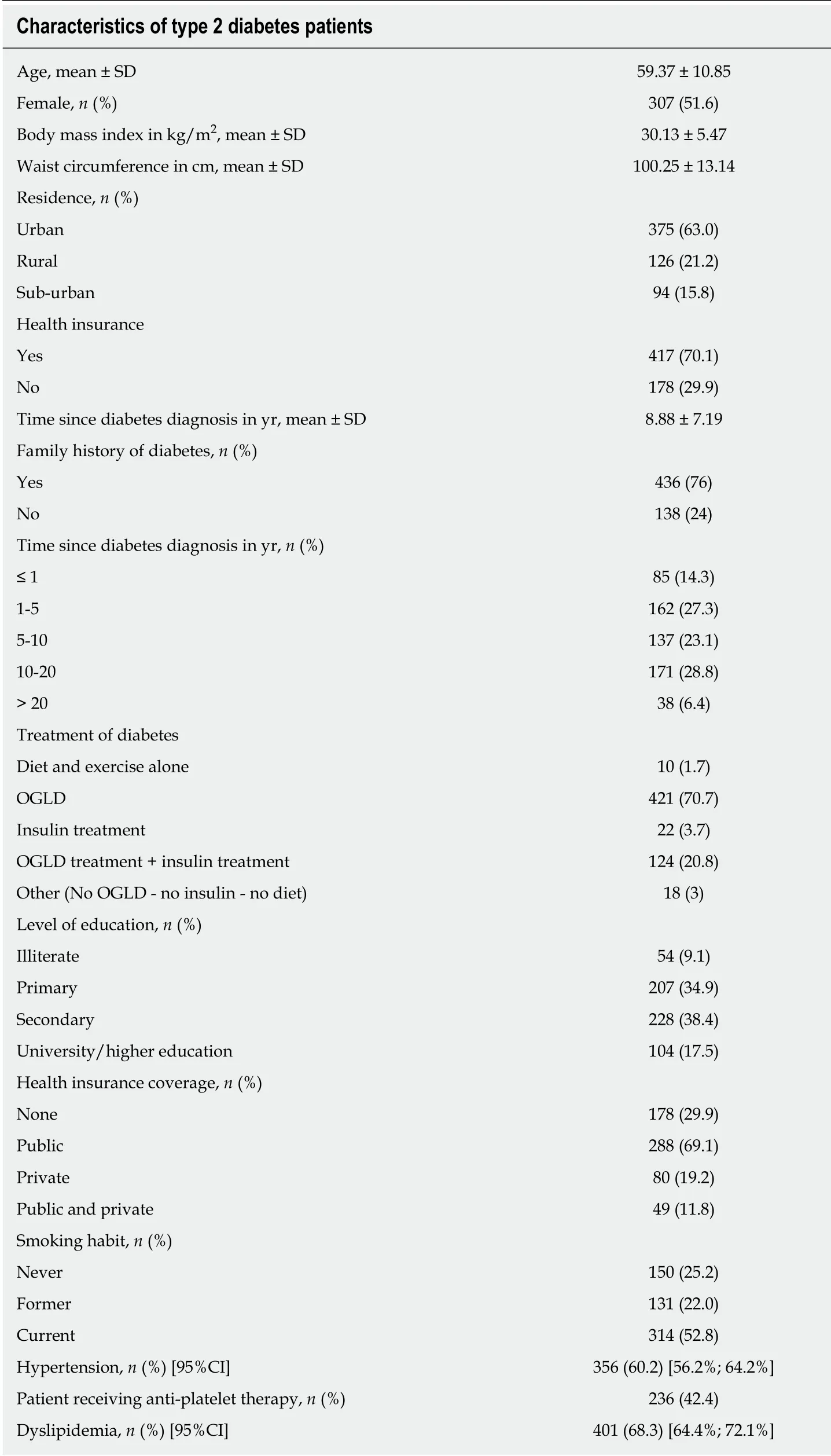
Table 1 Demographic characteristics of patients with diabetes mellitus
Among the recruited cohort of patients with type 2 Diabetes in 2013,the meanduration of diabetes was 8.88 (± 7.19) years,which was similar to that found in 2011,which was 8.11 (± 7.23) years.As for the long-standing history of diabetes,being defined as more than 20 years,it was found to be 6.4% in the year 2013,compared to 30.3% (around one third) in 2011.
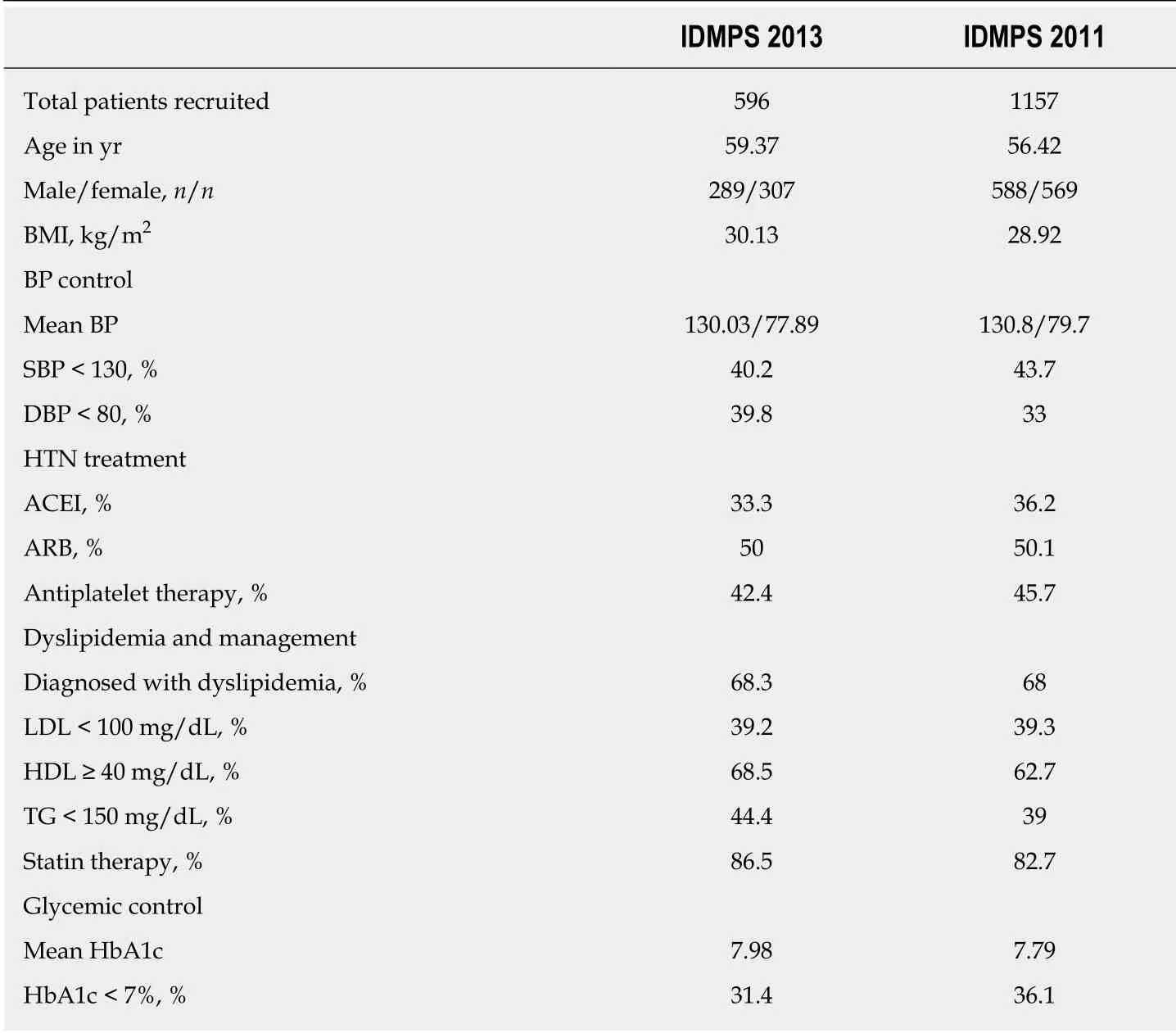
Table 2 Baseline characteristics of patients with diabetes mellitus in 2011 and 2013
In addition,it was found that 30% were able to achieve an HbA1c target of less 7%,and this stresses the need for having more proper follow-ups of patients,as well as the need to follow international guidelines on diabetes[9,10].This would ensure that a higher percentage of patients have better control of their diabetes mellitus and are below the target required for HbA1c levels.
In our study,we also noted that insulin use as the sole treatment strategy has declined from 7.5% in 2006 to 3.7% in year 2013,and thus more patients were found to be on a combination of oral hypoglycemic agents and insulin.This could be interpreted by the fact that a lesser number of included patients in year 2013 had longstanding diabetes mellitus of more than 20 years duration.The other explanation could also be partly related to the vast new hypoglycemic agents,which were introduced to the Lebanese market during that period of time,namely the incretins and SGLT 2 inhibitor family.
Concerning the screening for microvascular complications,65.7% of patients in 2013 with type 2 diabetes were screened for retinopathy,while this was 68.5% in 2011 and 53.2% in 2006.As for diabetic nephropathy and peripheral neuropathy,the screening proportions were 82.5% and 53.9%,respectively (as compared to being 63.4% and 47.9% in year 2006).Foot examination screening occurred in 63.9%.Screening for cardiovascular disease occurred in 76.9% of patients,which was 77.1%in the year 2011.It was noted that there were improved screening rates for diabetes complications in 2013 when compared to the year 2006,which probably shows that there is currently an increased awareness by physicians of the importance of screening to prevent late complications and poorer outcomes.However,it is important to note that screening methods have not increased when compared to the year 2011.However,upon checking other studies,it was noted that there was a worldwide failure to achieve glycemic targets.In the multinational,observational study that included 66,726 people with type 2 diabetes,who were enrolled from 28 countries across four continents (Asia,Africa,Europe and South America),53.5% hadmicrovascular complications and 27.2% had macrovascular complications[16].Similarly,in another study in India,a high prevalence of complications among patients with diabetes mellitus was reported,with 60% having neuropathies,20%having cataracts,15.4% having retinopathies,32.3% having coronary heart disease,11.5% having PVD,and 6.9% having a history of cerebrovascular accidents[17].
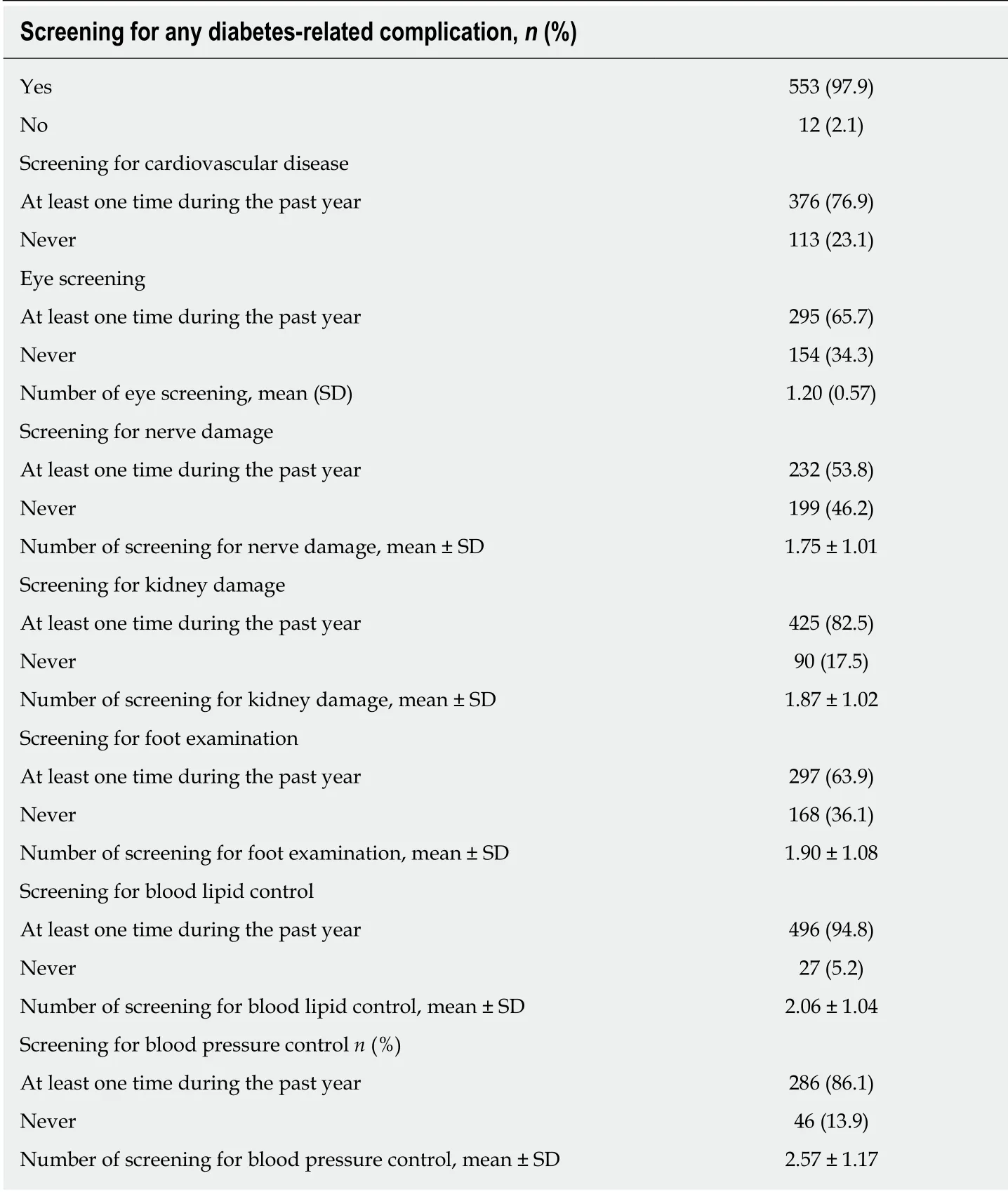
Table 3 Screening of diabetes-related complications in patients with diabetes mellitus
With regards to hypertension,a large percentage (60%) were diagnosed with hypertension,the majority of which were treated.However,a small percentage had a systolic blood pressure of less than 130,and an equal number had a diastolic blood pressure less than 80.This again shows the need to have more proper control of hypertension in patients with diabetes mellitus.When comparing our results to another study,it was found that the frequency of WHO-defined hypertension was high in the non-insulin-dependent patients who were older than 55 years,with a percentage of 43% for males and 52% for females,in a sample of 5,842 patients attending ten diabetic clinics in the London area[18].The prevalence of hypertension was also looked at amongst 450 persons with diabetes mellitus in Benin city,and a prevalence rate of 54.2% was found[19].In addition,a study in Jordan was conducted,and the prevalence of hypertension defined as a BP > 130/80 or on medication for high blood pressure among type 2 diabetes patients was 72.4% (70.9% of males and 73.9% of females)[20].
第三,可剥离性企业。这是关联企业的一种常见模式,这部分企业具有一定程度的涉黑性,其企业行为中具有相当程度的涉黑性质,但是也存在明显的合法企业成分,无论从企业人员、企业资产、企业客户群体等各方面都具有合法性与合理性,同时这部分内容与企业内的涉黑部分具有一定程度的可分性,能够明确划分涉黑人员与涉黑业务部分,司法机关可以通过侦查将其中涉黑部分予以剥离。
Concerning antihypertensive treatment,less patients were treated with ACEI(33.3%),as compared to an earlier report showing 46.2% usage in 2006 and 36.2% in 2011,respectively.As for ARB,50% were on this medication,and this was the same in the year 2011.The pattern of antihypertensive treatment among type 2 diabetes patients were looked at in 9,975 patients obtained from an outpatient medical center of the Department of Veterans Affairs,and it was found that over 60% of patients were receiving ACEI or ARB[21].Another study was conducted in the ruralsoutheastern Australia,including a total of 449 patients with hypertension and diabetes,and 39% of those patients were taking ACEI,while another 39% were taking ARB[22].
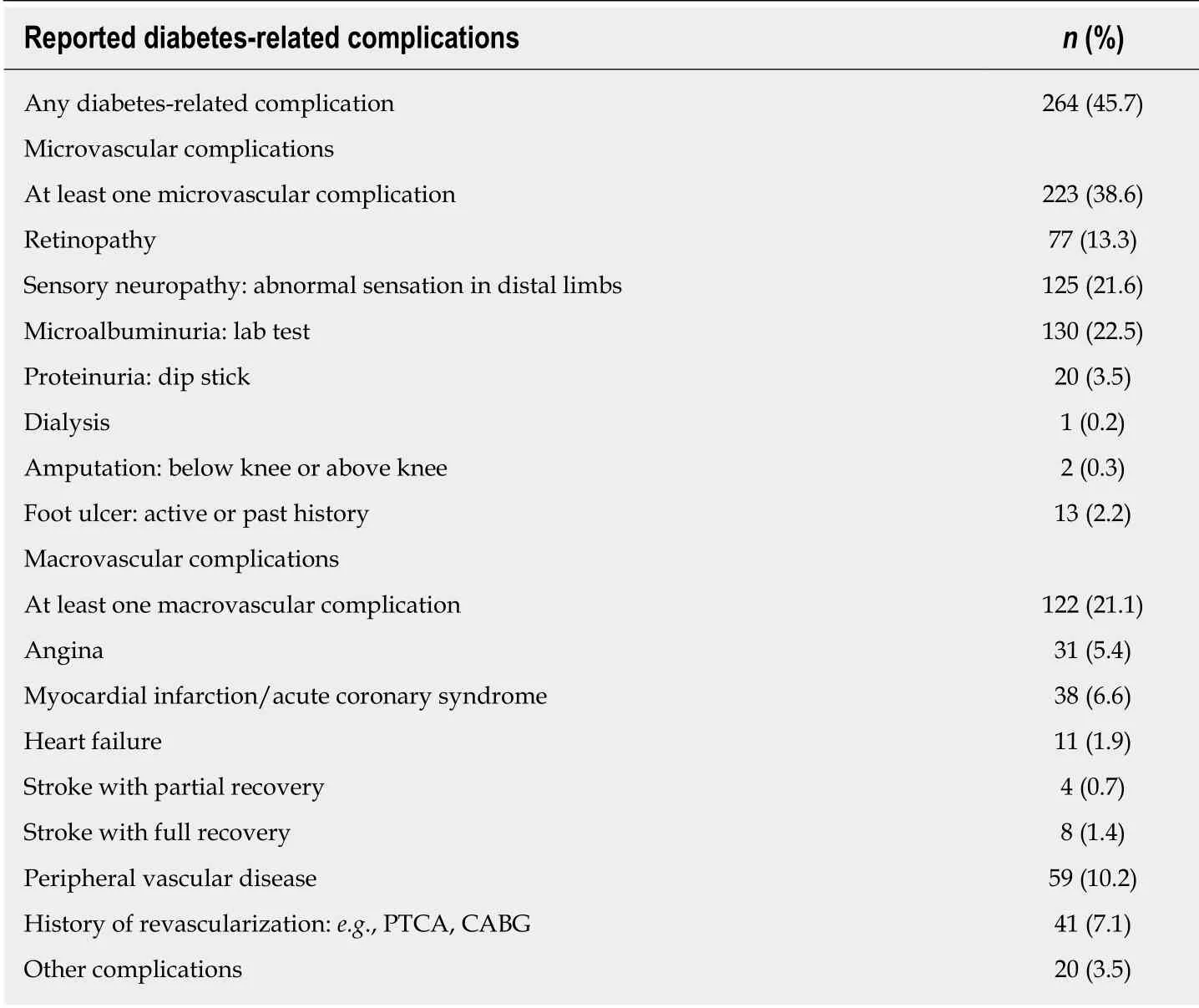
Table 4 Reported diabetes-related complications for patients with type 2 diabetes mellitus
Despite clinical practice guidelines recommending the use of antiplatelet therapy in patients with diabetes,the use of anti-platelets therapy in our study was shown to have decreased from 2006 to 2013,from 60.6% to 42.4% in the year 2013.In another study,in a cohort of primary care patients with type 1 or type 2 diabetes,which was part of a larger project called the Vermont Diabetes Information System,the prevalence of antiplatelet use was found to be 54%[23].
The same applies to lipid control,where 68% of our patients had dyslipidemia,and around 40% only had LDL < 100 mg/dL despite having 86.5% of patients on statin therapy.This shows that patients need more proper care,and physicians need to follow diabetes guidelines so as to have a larger number of patients who have appropriate treatment of their diabetes,hypertension and lipid control.Our results are better than another study done,which showed that diabetic dyslipidemia participants were being treated less often with lipid-lowering therapy[24].
Conclusion
In conclusion,the Wave 6 results of the IDMPS study does reveal a promising improvement in the management of diabetes mellitus;however,not enough patients are actually achieving the target glycemic control.Thus,a national effort is needed in order to have a more appropriate control of diabetes,hypertension and lipids.Screening of diabetes-related complications is improving,but at a slow rate.Treating physicians are becoming more aware of the necessity of screening for complications,but despite all their efforts,the glycemic and metabolic control of the Lebanese type 2 diabetes population is still not sufficient.There should be more emphasis on educating the population about the importance of lifestyle modifications and obesity control,which will eventually help to improve type 2 diabetic patient outcomes.

Table 5 Dyslipidemia among patients with diabetes mellitus,n (%)
ARTICLE HIGHLIGHTS
Research background
Diabetes mellitus is a common worldwide problem associated with significant morbidities and mortalities.This paper assesses the therapeutic management and control of patients with diabetes mellitus in the current medical practice in the Lebanese population.It identifies the proportion of subjects with target glycosylated hemoglobin (HbA1c) in compliance with the international recommendations’ guidelines,and the factors that would be predictive of reaching target HbA1c.It also identifies the percentage of patients with diabetes who are screened for complications of diabetes.Furthermore,the percentage of patients who have hypertension or dyslipidemia,or who are taking antiplatelet treatment,is also tackled.In addition,the assessment of the health economic impact of patients with type 2 diabetes and its complications is tackled.
Research motivation
The results discuss our findings in relation to the treatment strategies and goals recommended by the American Diabetes Association and the European Association for the Study of Diabetes.This will also help physicians with better management and follow-up practices for patients with diabetes mellitus,and underscores the need for proper screening of complications and other risk factors commonly associated with diabetes mellitus.
Research objectives
In this paper,data from Wave 2013-2014 of the International Diabetes Management Practices Study (IDMPS) were retrieved and analyzed.Endpoints included the proportion of subjects with target HbA1c in compliance with the international recommendations’ guidelines,the frequency of screening for diabetes complications and its risk factors,and the assessment of the health economic impact of type 2 diabetes and its complications.
Research methods
The IDMPS is an international study,observational in nature,conducted in multiple centers in non-Western countries,and included patients with diabetes mellitus who were randomly selected from a representative pool of diabetic patients.It involved six waves,beginning in 2006 and ending in 2014,with each wave being conducted yearly,and consisting of a cross-sectional and longitudinal phase.The cross-sectional phase was conducted through yearly surveys of 2 wk duration,and tried to assess the demographic characteristics of patients with diabetes mellitus,along with their therapeutic management in the current medical practice.The sixth Wave of the study did not include a longitudinal phase.A total of 60 physicians and 600 adult male or female patients were included into the sixth Wave in the year 2013.A signed written informed consent was obtained from all the participating patients before the application of any study-related procedures.Ethics committee approval was obtained from participating centers where such committees are in place.The SAP (version of 6 November 2014) used for this analysis aimed at describing the cross-sectional analysis of the sixth year (Wave 2013-2014).Proportions are reported as percentages of all the included populations,and means are reported as continuous variables ± standard deviations.
Research results
Five hundred and ninety-five patients with type 2 diabetes were included in Wave 6,and only a single patient with type one diabetes mellitus was included.The average age was around 60 years,with a mean BMI of 30.The mean fasting serum glucose was 159.42 mg/dL and mean HbA1c level was 7.98,with around 30% achieving an HbA1c target of less than 7%.More patients were on oral anti-diabetic medications,probably related to the recent introduction of new oral medications.Screening of diabetic complications has improved over the years.A large percentage of patients were diagnosed with hypertension and dyslipidemia,the majority of which were treated,but a small percentage controlled.
Research conclusions
The results of the IDMPS study Wave 6 shows that there is a promising improvement in the management of diabetes mellitus;however,it is still obvious that there are not enough patients achieving the target glycemic control.There is still not sufficient screening for diabetes-related complications and its risk factors.This is in concordance with the hypothesis we had prior to study initiation.
Research perspectives
This research offers new perspectives concerning the need for more awareness campaigns to both physicians and patients with diabetes mellitus.Thus,a national effort is needed in order to have a more appropriate control of diabetes,hypertension and lipids.Screening of diabetesrelated complications is improving,but at a slow rate and not significantly compared to previous years.There should be more emphasis on educating the population about the importance of lifestyle modifications and obesity control,which will eventually help to improve type 2 diabetic patient outcomes.
